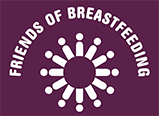As you might guess from this list, human milk is such a complex substance, it is impossible to replicate!

Water
Carbohydrates (energy source)
Lactose
Oligosaccharides (see below)
Carboxylic acid
Alpha hydroxy acid
Lactic acid
Proteins (building muscles and bones)
Whey protein
Alpha-lactalbumin
HAMLET (Human Alpha-lactalbumin Made Lethal to Tumour cells)
Lactoferrin
Many antimicrobial factors (see below)
Casein
Serum albumin
Non-protein nitrogens
Creatine
Creatinine
Urea
Uric acid
Peptides (see below)
Amino Acids (the building blocks of proteins)
Alanine
Arginine
Aspartate
Clycine
Cystine
Glutamate
Histidine
Isoleucine
Leucine
Lycine
Methionine
Phenylalanine
Proline
Serine
Taurine
Theronine
Tryptophan
Tyrosine
Valine
Carnitine (amino acid compound necessary to make use of fatty acids as an energy source)
Nucleotides (chemical compounds that are the structural units of RNA and DNA)
5’-Adenosine monophosphate (5”-AMP)
3’:5’-Cyclic adenosine monophosphate (3’:5’-cyclic AMP)
5’-Cytidine monophosphate (5’-CMP)
Cytidine diphosphate choline (CDP choline)
Guanosine diphosphate (UDP)
Guanosine diphosphate – mannose
3’- Uridine monophosphate (3’-UMP)
5’-Uridine monophosphate (5’-UMP)
Uridine diphosphate (UDP)
Uridine diphosphate hexose (UDPH)
Uridine diphosphate-N-acetyl-hexosamine (UDPAH)
Uridine diphosphoglucuronic acid (UDPGA)
Several more novel nucleotides of the UDP type
Fats
Triglycerides
Long-chain polyunsaturated fatty acids
Docosahexaenoic acid (DHA) (important for brain development)
Arachidonic acid (AHA) (important for brain development)
Linoleic acid
Alpha-linolenic acid (ALA)
Eicosapentaenoic acid (EPA)
Conjugated linoleic acid (Rumenic acid)
Free Fatty Acids
Monounsaturated fatty acids
Oleic acid
Palmitoleic acid
Heptadecenoic acid
Saturated fatty acids
Stearic
Palmitic acid
Lauric acid
Myristic acid
Phospholipids
Phosphatidylcholine
Phosphatidylethanolamine
Phosphatidylinositol
Lysophosphatidylcholine
Lysophosphatidylethanolamine
Plasmalogens
Sphingolipids
Sphingomyelin
Gangliosides
GM1
GM2
GM3
Glucosylceramide
Glycosphingolipids
Galactosylceramide
Lactosylceramide
Globotriaosylceramide (GB3)
Globoside (GB4)
Sterols
Squalene
Lanosterol
Dimethylsterol
Methosterol
Lathosterol
Desmosterol
Triacylglycerol
Cholesterol
7-dehydrocholesterol
Stigma-and campesterol
7-ketocholesterol
Sitosterol
β-lathosterol
Vitamin D metabolites
Steroid hormones
Vitamins
Vitamin A
Beta carotene
Vitamin B6
Vitamin B8 (Inositol)
Vitamin B12
Vitamin C
Vitamin D
Vitamin E
a-Tocopherol
Vitamin K
Thiamine
Riboflavin
Niacin
Folic acid
Pantothenic acid
Biotin
Minerals
Calcium
Sodium
Potassium
Iron
Zinc
Chloride
Phosphorus
Magnesium
Copper
Manganese
Iodine
Selenium
Choline
Sulpher
Chromium
Cobalt
Fluorine
Nickel
Metal
Molybdenum (essential element in many enzymes)
Growth Factors (aid in the maturation of the intestinal lining)
Cytokines
interleukin-1β (IL-1β)
IL-2
IL-4
IL-6
IL-8
IL-10
Granulocyte-colony stimulating factor (G-CSF)
Macrophage-colony stimulating factor (M-CSF)
Platelet derived growth factors (PDGF)
Vascular endothelial growth factor (VEGF)
Hepatocyte growth factor -α (HGF-α)
HGF-β
Tumor necrosis factor-α
Interferon-γ
Epithelial growth factor (EGF)
Transforming growth factor-α (TGF-α)
TGF β1
TGF-β2
Insulin-like growth factor-I (IGF-I) (also known as somatomedin C)
Insulin-like growth factor- II
Nerve growth factor (NGF)
Erythropoietin
Peptides (combinations of amino acids)
HMGF I (Human growth factor)
HMGF II
HMGF III
Cholecystokinin (CCK)
β-endorphins
Parathyroid hormone (PTH)
Parathyroid hormone-related peptide (PTHrP)
β-defensin-1
Calcitonin
Gastrin
Motilin
Bombesin (gastric releasing peptide, also known as neuromedin B)
Neurotensin
Somatostatin
Hormones (chemical messengers that carry signals from one cell, or group of cells, to another via the blood)
Cortisol
Triiodothyronine (T3)
Thyroxine (T4)
Thyroid stimulating hormone (TSH) (also known as thyrotropin)
Thyroid releasing hormone (TRH)
Prolactin
Oxytocin
Insulin
Corticosterone
Thrombopoietin
Gonadotropin-releasing hormone (GnRH)
GRH
Leptin (aids in regulation of food intake)
Ghrelin (aids in regulation of food intake)
Adiponectin
Feedback inhibitor of lactation (FIL)
Eicosanoids
Prostaglandins (enzymatically derived from fatty acids)
PG-E1
PG-E2
PG-F2
Leukotrienes
Thromboxanes
Prostacyclins
Enzymes (catalysts that support chemical reactions in the body)
Amylase
Arysulfatase
Catalase
Histaminase
Lipase
Lysozyme
PAF-acetylhydrolase
Phosphatase
Xanthine oxidase
Antiproteases (thought to bind themselves to macromolecules such as enzymes and as a result prevent allergic and anaphylactic reactions)
a-1-antitrypsin
a-1-antichymotrypsin
Antimicrobial factors (are used by the immune system to identify and neutralize foreign objects, such as bacteria and viruses.
Leukocytes (white blood cells)
Phagocytes
Basophils
Neutrophils
Eoisinophils
Macrophages
Lymphocytes
B lymphocytes (also known as B cells)
T lymphocytes (also known as C cells)
sIgA (Secretory immunoglobulin A) (the most important antiinfective factor)
IgA2
IgG
IgD
IgM
IgE
Complement C1
Complement C2
Complement C3
Complement C4
Complement C5
Complement C6
Complement C7
Complement C8
Complement C9
Glycoproteins
Mucins (attaches to bacteria and viruses to prevent them from clinging to mucousal tissues)
Lactadherin
Alpha-lactoglobulin
Alpha-2 macroglobulin
Lewis antigens
Ribonuclease
Haemagglutinin inhibitors
Bifidus Factor (increases growth of Lactobacillus bifidus – which is a good bacteria)
Lactoferrin (binds to iron which prevents harmful bacteria from using the iron to grow)
Lactoperoxidase
B12 binding protein (deprives microorganisms of vitamin B12)
Fibronectin (makes phagocytes more aggressive, minimizes inflammation, and repairs damage caused by inflammation)
Oligosaccharides (more than 200 different kinds!)
Developed as a student project for the Breastfeeding Course for Health Care Providers, Douglas College, New Westminster, BC, Canada – © 2007 by Cecily Heslett, Sherri Hedberg and Haley Rumble
